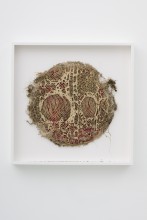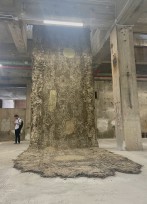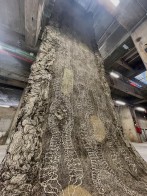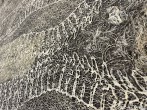Why We Make galleries opening April 2026
The dress grown from roots will be showcased in the permanent gallery ‘Why We Make”. The two ‘Why We Make”galleries exploring global contemporary culture, they take inspiration from the history of east London as a hub for design and creativity, centring topics from representation and identity to social justice and environmental action. Displaying items from within the V&A collection and over 100 newly acquired objects.
V &A Museum
Parkes Street,
Queen Elizabeth Olympic Park,
London, United Kingdom E20 3AX
https://www.vam.ac.uk/east?srsltid=AfmBOop-4-eEmV60TgRZP_1XQQuKRxX89ICjQc697y0xElbBEW_4SgTP
SYMBIOSIS
16.5.2026 ‐ 1.11.2026
Malva Museum Lahti
Artists:
Liina Aalto-Setälä, Gerbrand Burger / Thinking Forest, Eyes as Big as Plates(Karoline Hjorth & Riitta Ikonen), Alma Heikkilä, Kim Laybourn, nabbteeri, Raimo Saarinen and Diana Scherer.
https://www.malvamuseo.fi/en/exhibitions/symbiosis/


#1
The mushroom at the end of the world
9 nov. t/m 12 apr. 2026
An exhibition on decay and resilience
Artists: Maartje Korstanje, Diana Scherer, Zeger Reyers, Driessens & Verstappen, Margit Lukács & Persijn Broersen, Suzette Bousema, Otobong Nkanga
Curator: Rianne Groen
Coda Apeldoorn
Habitats. (Un)Safe Spaces | May 24 – September 28, 2025
The Triennial for Small Sculpture Fellbach will celebrate its 16th edition in 2025. For over four decades, this renowned exhibition of contemporary small-scale sculptures has been a cornerstone of the global art scene. Works by around 50 internationally acclaimed artists will be showcased in the impressive setting of the Alte Kelter. The 16th Triennial for Small Sculpture Fellbach, under the title Habitats. (Un)Safe Spaces, will explore the question of how we can live together in the future in light of global challenges. At the heart of the exhibition is the fragile relationship between humans and nature, which the artists will approach from a wide range of perspectives.
Yield
26 juni t/m 24 augustus 2025


#1
Kunsthal Rotterdam from 15 March until 11 May 2025 Art Rotterdam
For the ninth consecutive year, the NN Art Award will be presented in 2025 to a promising artist showcasing their work at Art Rotterdam. This year’s nominees are Diana Scherer (andriesse eyck galerie), Marcos Kueh (Prospects section of the Mondriaan Fund, courtesy of Galerie Ron Mandos), Pris Roos (Mini Galerie) and Bodil Ouédraogo (Prospects section of the Mondriaan Fund). The work of the four nominees will be on view at Kunsthal Rotterdam from 15 March until 11 May 2025.
https://www.kunsthal.nl/nl/plan-je-bezoek/tentoonstellingen/nn-art-award-2025/https:


#1


#2


#3
APICAL
Solo 26 Oktober – 18 January 2025
https://www.instagram.com/diana__scherer/
Opening Saturday 26 oktober 17.00-19.00
https://andriesse-eyck.com/exhibitions/101
Leliegracht 47 Amsterdam


Yield 2024 roots, soil, gras, yellow fabric 14000 cm x 2500 cm


#2


#3


#4


#5
Manifesta 15 Metropolitana September 8th 2024
https://www.manifesta15.org/organisation?category=5&page=events-slug&slug=yield
https://www.instagram.com/diana__scherer/p/C_nrY0Ho_DN/?img_index=1
Commissioned by Manifesta 15 Barcelona Metropolitana
Supported by Mondriaan Fund and the Embassy of the Kingdom of the Netherlands to Spain
Many thanks for all support Colin Huizing and Museum Kranenburgh
